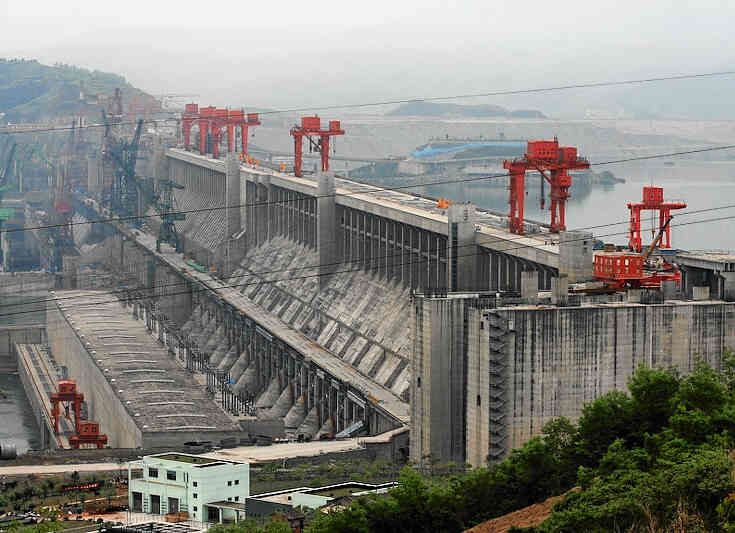Claim
Craig Kelly says that China is exempt from emission reduction targets to 2030 under the Paris Agreement. He says this is “criminal” because it surrenders “our nation’s economic competitive advantages”.
Verdict

The claim is misleading. It is true that China’s Paris commitment was only to peak (not reduce) its emissions by 2030. But this is still a binding target and China has since improved those commitments.

Australia’s per capita emissions are more than double China’s and we are doing less to reduce them. Australia is not losing by moving to renewable energy, but by moving too slowly.
The claims in detail
In a 17th December Facebook post, under the heading “Surrender to China”, Craig Kelly said that under the Paris Climate Agreement, China has no commitment to reduce emissions to 2030. This, he said, gives China a competitive advantage that is “criminal”.
“Never forget those pushing the Paris Climate Accord and ‘Net Zero by 2050’ are simply surrendering our nation’s economic competitive advantages to China” he wrote. “No wonder the Communist Party of China laughs the radicalised green extremists in Australia – and treat them as their ‘’useful idiots’’. We have to stand up for Australia’s interests and not seek to pander to UN Globalists.”
Background
There have been several international agreements on climate change, including:
- 1992. UN Framework Convention on Climate Change. Ratified by 197 countries. Established a forum for discussion and action.
- 1997. Kyoto Protocol. A legally binding agreement that came into force in 2005. Required developed countries to reduce emissions but didn’t require China or India to take action. Not ratified by the US.
- 2015. Paris Agreement. A legally binding agreement that requires all countries to set “emissions-reduction pledges”. It aims to reach global net-zero emissions, and so keep temperature rise to less than 2°C above preindustrial levels and trying to keep it below 1.5°C. Most countries formally approved the agreement. Eight countries (mostly in the Middle East and Africa) did not approve it and the US withdrew in 2020. It is generally accepted that global emission reduction under the Paris Agreement is insufficient to reach its goals.
China’s greenhouse gas emissions
Greenhouse gas emissions are measured in tons of CO2 or the CO2 equivalent of total greenhouse gases. The fairest comparison is per capita annual emissions. Here are the data for CO2 emissions.
(Total greenhouse house emissions are about 40% larger, but the relativities are similar. I have used CO2 because these figures are more recent.)
| Emissions | China | USA | Australia | World |
| Total annual emissions (tonnes x billion) | 10.06 | 5.41 | 0.42 | 36 |
| Per capita annual emissions (tonnes) | 7.05 | 16.56 | 16.92 | 4.7 |

It is clear that:
- China’s emissions have grown significantly in the last two decades to become the largest of any country.
- China’s per capita emissions are still well below those of Australia and USA. China has 13th highest per capita CO2 emission, while Australia is 3rd highest and USA 4th. All three are well above the global average.
- USA and Australia’s emissions have been falling this century, and China’s have now levelled off.
About two thirds of China’s electricity is currently generated in thermal (coal & gas) power stations (compared to 79% in Australia). Renewable sources (hydro, wind, solar, etc) account for about 27% of China’s electricity compared to Australia’s 21%. So China is more invested in renewables than is Australia.
China’s commitments
In the Paris Agreement, China committed to ensuring its emissions peaked by 2030 or before. Thus it is true, as stated by Mr Kelly, that China did not commit to a reduction by 2030. But his statement is misleading because:
- China’s per capita emissions are well below Australia’s and the USA’s. For a level playing field, the largest emitters (developed countries) must commit to larger and earlier cuts than lower emitters (developing countries).
- China’s emissions have levelled off and fallen slightly since 2013.
- China has recently committed to stronger targets than those in the Paris Agreement, including net zero by 2060. (This is a stronger commitment than Australia has made.)
Conclusion
Like almost every other country, China will need to do more to reach net zero by mid century. But its contribution to global warming is less per capita than is Australia’s. And it is doing more than Australia to combat climate change by changing how it produces energy.
China is hardly laughing at “radicalised green extremists in Australia” for it has committed to new zero emissions whereas Australia has not. Australia is increasingly out of touch with its Asian trading partners and risks giving its trade competitors an advantage.
Mr Kelly’s claims are thus misleading and mistaken. He criticises Australia for doing too much, when it should be criticised for doing too little.
Mr Kelly would serve his constituents better if he pressed his own government to concerted action to support renewable energy rather than a climate-destroying “gas led recovery”.
Photo: The Three Gorges Dam in China, the world’s largest electricity-generating plant of any kind. Photo by Christoph Filnkößl.
